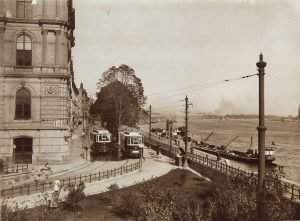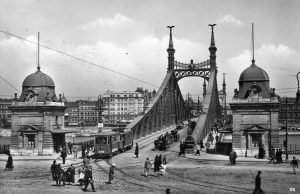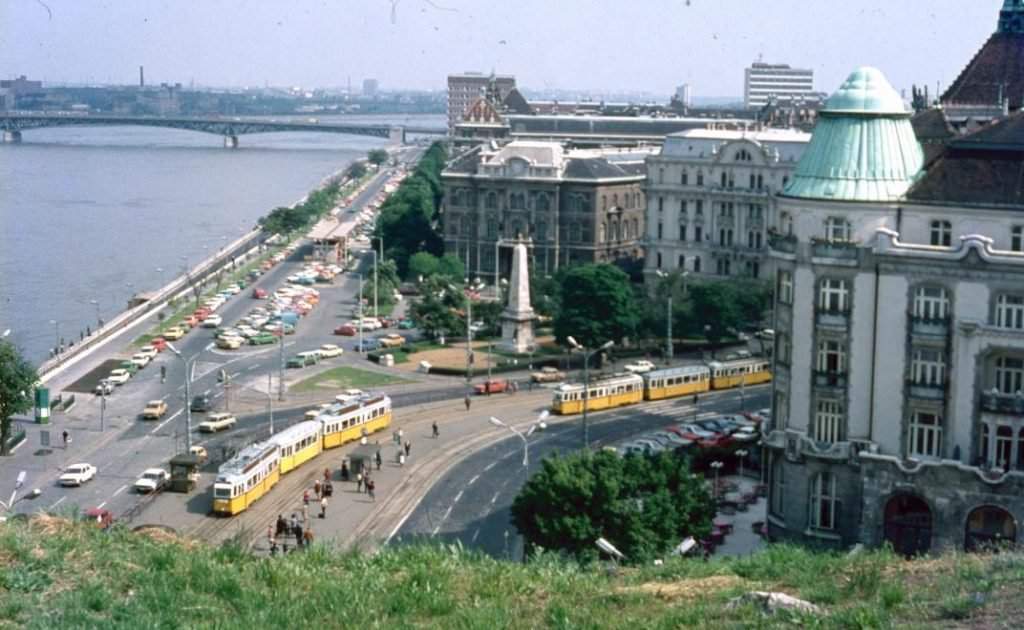Secrets of Budapest – The lost trams

According to funzine.hu, there were times when trams were kept count of as extremely modern means of transportation, and a very long time ago carts pulled by horses were the coolest vehicles in Budapest. The country was enriched by more and more tramlines until WWII, while more and more tram rails were removed from the 1970s. But which were these lines and why did they have to go?
The first horse tram started circulating in the city in the July of 1866 between Váci Road and Kálvin Square (Széna Square back then). The first electric tram was put into operation at the time of the Grand Boulevard’s construction in the November of 1887, between Nyugati railway station and Király Street. Even though this more modern tram appeared not long after the horse trams, those only stopped working in 1898 (to be more precise, some of them carried on circulating on the Margaret Island until 1928).
You might think that the first trams were quick, but they weren’t at all. They could only go with 10 km/h in inner districts and 20 km/h in outer, less frequented districts.

In fact, at the end of the 19th century and the beginning of the 20th century, drivers were regulated much more strictly: they had to give account of their days off, concerning where they were going to be, so that, if they were needed, they could be called in immidiately.
Budapest, in the net of trams
Budapest dwellers loved trams, even horse trams, this is why the city got 15 horse tramlines in 1855. Until the change of regime trams circulated in a lot of places where nothing reminds us of this anymore.

Then…

…and now
For instance, in Kálvin Square, which was called Flayer in common language, because several tramlines crossed each other there. The lines coming from Fővám Square didn’t stop at Deák Square, but kept on going on Bajcsy Zsilinszky Road as far as Nyugati railway station. A tram also circulated in Kecskeméti Street, which had its final stop at the Cemetery of Fiumei Road. In fact, this was the first line similar to today’s trams concerning the 1435 millimetre track gauge. It was first launched from Egyetem Square in 1889.
Other trams circulated from Deák Ferenc Square to Szent István Boulevard in streets so narrow that we couldn’t even imagine today. The yellow trams touched upon Erzsébet Square, Október 6. Street and Szabadság Square, while reaching Szent István Boulevard from Deák Square.
Most of the still existing traffic junctions, like the one at Széll Kálmán Square, were formed between the two World Wars. At that time, trams played a key role in public transportation. Just like in the case of Széll Kálmán Square, the situation hasn’t changed a lot during the decades.

Tram line 2 also used to circulate on a way different route: it covered the neighbourhood of the Keleti railway station and Dózsa György Road until 1941 and wandered into narrow streets like Klauzál Street. In 1952, at the time of the Felszabadulás Square’s reconstruction, the city board decided to end tram transport on Dózsa György Road. With this decision, they broke the united, circular tram transport.
In the 1960s, trams ultimately lost their popularity due to a new, more modern and quicker mean of transportation: the metro.
Metro, the tram killer
Even though the millennial subway inaugurated at the end of the 19th century didn’t pose competition to trams, metro line 2 did. As soon as metro 2 was ready to function, the tram transport on Rákóczi Road was stopped. The city board hoped that the bus 7 family and the new metro would make up for the trams, which, for that matter, led up till Buda through Elizabeth Bridge. The rails on the bridge were only removed in 1975.
The total abolishment of tram transportation would’ve only been practical if metro 4 had been finished by the 1970s, but as we know, we had to wait a “little bit” longer for that, so public transportation on Rákóczi Road wasn’t the most pleasant experience back then. Metro 2 was also the reason why tram transport between Margaret Bridge and Batthyány Sqaure was suspended.
The 1973 inauguration of metro line 3 meant the end of tram transport on the Váci road and Árpád Road, and that was also when city dwellers had to say goodbye to trams crossing Kálvin Square, Üllői Road and Pöttyös Street.
In the 80s and 90s further lines were suspended, the last one was line 23 in 2000. But there are reverse operations as well, just think about the broadening of tram line 1, or the Buda intertwining tram network. And who knows what’s going to happen in the next decades, we might even have metro 5,6,7…
Photos: www.fortepan.hu, Kelemen Bálint
Ce: bm
Source: http://funzine.hu/





